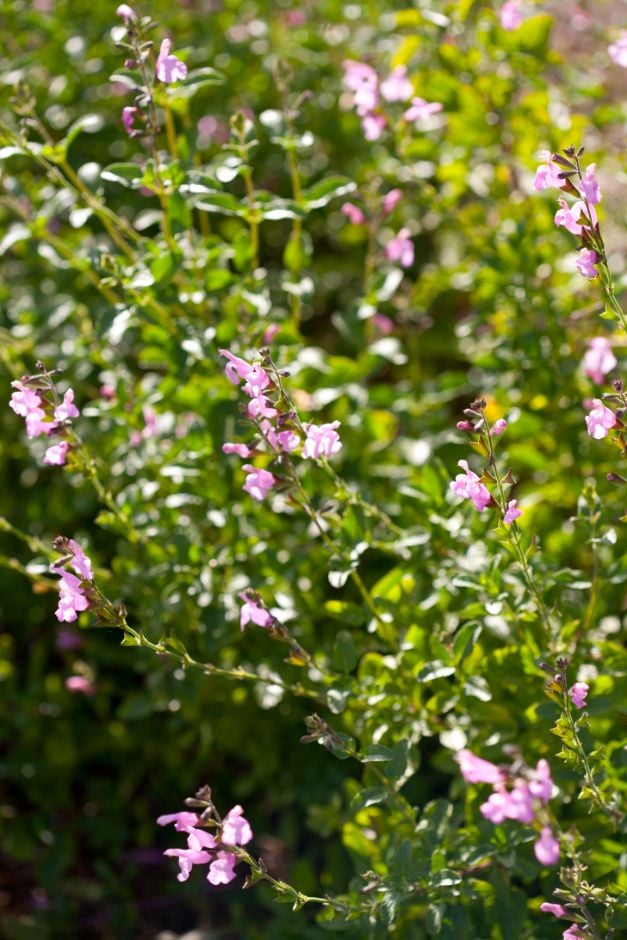Salvia greggii
autumn sage
A bushy dwarf plant to 30-50cm tall, branching mainly from the base and evergreen if not cut back by frosts, with aromatic, small, ovate, downy, mid to deep green leaves. Red to purple, pink, yellow or violet flowers are borne in terminal racemes from late summer to autumn continuing to the first frosts

Buy this plant
Size
Ultimate height
0.5–1 metresTime to ultimate height
2–5 yearsUltimate spread
0.5–1 metresGrowing conditions
Moisture
Moist but well–drained, Well–drainedpH
Acid, Alkaline, NeutralColour & scent
| Stem | Flower | Foliage | Fruit | |
| Spring | Green | |||
|---|---|---|---|---|
| Summer | Cream Pink Purple Red | Green | ||
| Autumn | Cream Pink Purple Red | Green | ||
| Winter | Green |
Position
- Full sun
Aspect
West–facing or South–facing
Exposure
ShelteredDrought resistance
Yes Hardiness
H4Botanical details
- Family
- Lamiaceae
- Native to GB / Ireland
- No
- Foliage
- Evergreen
- Habit
- Bushy
- Genus
Salvia can be annuals, biennials, herbaceous or evergreen perennials, or shrubs. They have paired, simple or pinnately lobed, often aromatic leaves and 2-lipped flowers in whorls, forming simple or branched spikes or racemes
- Name status
Correct
- Plant range
- Mexico, adjacent USA
How to grow
Cultivation
Grow in light, moderately fertile, well-drained soil. Needs a sheltered position but usually overwinters if given full sun and good drainage. Drought tolerant
Propagation
Propagate by basal cuttings or softwood cuttings in spring or early summer or semi-ripe cuttings in late summer or autumn with bottom heat
Suggested planting locations and garden types
- Gravel garden
- Patio and container plants
- City and courtyard gardens
- Coastal
- Cottage and informal garden
- Mediterranean climate plants
- Wildlife gardens
- Flower borders and beds
- Wall side borders
Pruning
Pruning group 9 in spring, deadhead to prolong flowering
Pests
May be susceptible to leafhoppers, slugs, snails and rosemary beetle
Diseases
May be susceptible to honey fungus (rarely), powdery mildews, verticillium wilt and foot and root rots
Get involved
The Royal Horticultural Society is the UK’s leading gardening charity. We aim to enrich everyone’s life through plants, and make the UK a greener and more beautiful place.